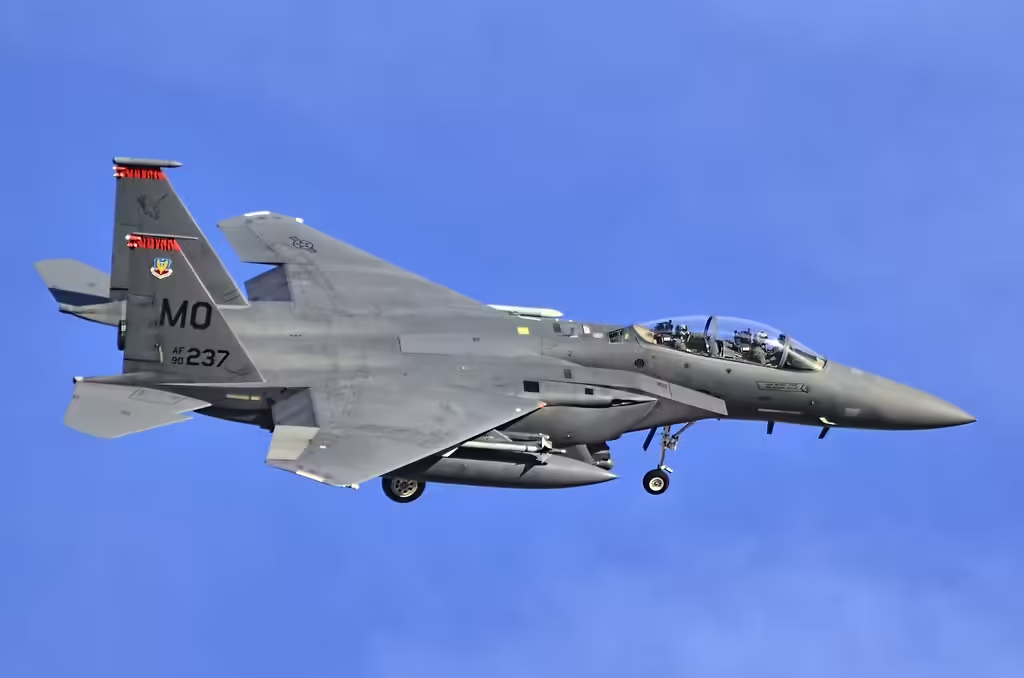
Table of Contents
Summary: Fighter jets, epitomizing the pinnacle of aviation innovation, have evolved dramatically from World War One’s biplanes to today’s stealth-capable, fifth-generation marvels like the F-35 Joint Strike Fighter, the priciest weapon system ever developed.

- These aircraft justify their high investment costs because they are essential to worldwide military strategy and not just symbols of air supremacy.
-Aviation history describes many fighter programs that fell short of expectations despite many accomplishments.
5 Worst Fighter Jets Ever
In the history of aviation, the fighter jet may be the most recognizable type of aircraft. With its sleek design, booming engines, and relative instabilities, the fighter jet often comes to mind when the common man thinks of aircraft.
Since they were first introduced more than a century ago, fighters have advanced. The fighter jet is an ever-changing concept, having evolved from the basic biplane of World War I to the supersonic, super-cruising, ultra-maneuverable, stealth-capable fifth-generation fighters. It is much more than just an aviation icon. It is a basic weapon that is essential for military force organization and war preparation. A large portion of the military budget is devoted to the research and design of fighter aircraft around the world. Undoubtedly, the F-35 Joint Strike is the most expensive weapon system in the history of the world.

Yakovlev Yak-38
Cold War rivalry was at the center of the conflict for the Soviet Union and the West for high military technology development. The Soviet response to the British introduction of the Harrier GR.1 “jump jet” with vertical takeoff and landing (VTOL) capability in 1967 was swift. Their response was the rather successful Yakovlev Yak-38 VTOL aircraft. However, the Yak-38’s combination of two lift turbofans and rear thrust engines made it extremely difficult to control. If one of the elevator fans fails, the Yak-38 will go out of control. Furthermore, due to their sensitivity to dust and dirt (such as the sort prevalent in Afghanistan) the failure rate of elevator fans is high.

Mikoyan-Gurevich MiG-23
Mikoyan-Gurevich, a Soviet/Russian aerospace firm, has a long history of successful designs. For good reason, the corporate acronym “MIG” is commonly associated with “enemy aircraft” in the West. However, Mig has also put out several bad albums.

Like the MiG-15 or MiG-21, the MiG-23 was another feather in the MiG’s crown. However, the swept-wing MiG-23 proved to be a nightmare, with unstable handling and an engine that frequently overheated and died prematurely. The MiG-23 had a poor combat record and higher maintenance costs than expected. MiG-23s deployed in Syria and Iraq were damaged in combat by F-4s, F-14s and F-15s. In combat, the MiG-23 outperformed the MiG-21, which was intended to replace the MiG-23. With the exception of North Korea and Syria, the MiG-23 was suddenly phased out in favor of the MiG-27.
Convair F-102 Delta Dagger
The first American fighter aircraft with a delta wing and the first all-weather supersonic jet fighter was the Convair F-102 Delta Dagger, of the “Century Series”. When it was commissioned in 1956, problems were immediately apparent. The fuselage of the F-102, which was intended to be a high-speed aircraft, had to be modified to accommodate transonic wave drag when it failed to reach Mach 1. After repairs the aircraft was able to reach Mach 1.22, but additional problems appeared and needed to be fixed in several ways. Because the Air Force did not consistently update the F-102 fleet, each aircraft had a different set of capabilities.

Heinkel He 162
With the Messerschmitt Me 262,Nazi Germany is credited with introducing jet technology for the first time. During the latter part of the war (and the latter part of the dictatorship) the Nazis made a desperate attempt to increase the number of fighter planes in production. The result was the Heinkel He 162, often known as the People’s Fighter or “Volksjaeger”.

Like the Volkswagen, the He 162 aimed to be built at the lowest practicable cost with semi-skilled workers. why Because by the end of the war the Nazis were almost bankrupt and had trouble maintaining their war economy. As metal alloys were not accessible, wood was used extensively in the construction of the He 162. As you might expect the jet flew poorly and the design was completed in approximately two months. Although too late, three hundred He 162s were sent into action. After the fall of Nazi Germany, the He 162 was forgotten and had little impact on the war.
Vought F7U Cutlass
The Vought F7U Cutlass had a unique appearance. The design dates back to the early jet era, when there was freedom to experiment and no set standards for designs. The result of this study was the F7U, a tailless with sweeping wings.

The F7U is, in my opinion, incredibly attractive and was the first aircraft built in the United States with wings and afterburners. Although it had many problems, the unique design provided exceptional capability and agility. The F7U was nicknamed the “Gutless Cutlass” due to its weak engine. Similarly, many systems were new and found to be faulty. The jet was discontinued in 1959 after a poor safety record discouraged pilots from flying the aircraft.

About the Author: Harrison Kass
The author of more than 1,000 articles on international politics, Harrison Kass specializes in writing on the military and national security. Harrison is a pilot, lawyer, guitarist, and former minor league hockey player. He joined the US Air Force as a trainee pilot but was later medically discharged. Harrison holds an MA from New York University, a JD from the University of Oregon, and a BA from Lake Forest College. Harrison lets Dokken listen.
READ | France is giving Ukraine Mirage 2000 fighter jets forget the F-16
READ | Top 5 Oldest Fighter Jets Still in Operational Service


2 thoughts on “Top 5 Worst Fighter Planes Ever to Take Off”